NOTICE: This post references card features that have changed, expired, or are not currently available
On my recent trip to Europe, I had a number of small “ah-ha” moments. These didn’t all warrant separate posts, but I thought that some readers traveling to Europe may benefit from one or another of my mistakes and/or observations, so I’m collectively putting them together here as a list of lessons from my recent trip to Europe that can hopefully make your next trip there a little smoother/easier or give you a tidbit you hadn’t previously known.
1) Plan intra-European travel in advance
Lesson one comes from the “duh” file, but it’s worth mentioning to those who have become highly accustomed to award travel. As someone who books award tickets almost every month, I’ve really gotten used to leaving flight-booking to the last minute. There’s usually something available and with enough flexible points on hand, it seems that it should be easy to find a deal for short hops within Europe.
However, that didn’t work out for me on my recent trip. I wasn’t flying routes with direct oneworld flights, so taking advantage of distance-based pricing with Avios was out. LifeMiles seemed like an attractive option for a couple of shorter flights, but everything I read indicated that you can’t add a lap infant to a LifeMiles booking (without major hassle at least) and Avianca would not let me book a seat for a traveler under 2 years old. Aeroplan’s Maximum Permitted Mileage got me on a ticket I was going to book where the only 1-stop option was 100 miles too long for Aeroplan to book it (I could instead book a 2-stop itinerary that would take much more time but fly just a hair fewer miles so as to make it under the wire).
Both train and plane travel within Europe can be really cheap when booked in advance, but both become more expensive at the last minute. Because I (incorrectly) assumed that I’d find award space and “fly by the seat of my pants”, I ended up paying a little more for flights than I needed to. They were still much cheaper than domestic flights within the US, and cash prices made it hard to justify the ~15K miles each way charged by most programs for intra-European economy class, but I’d have been better off to have booked cash tickets (or booked through a credit card portal) farther in advance.
2) Condor “premium” is really European business class
Intra-European business class is famously simple: in all but a small handful of cases, business class within Europe is just an economy class row with the middle seat blocked off. You’ll additionally have a greater luggage allowance and free food and drinks on the plane. If those benefits sound familiar, maybe that’s because you just read those things in the checklist under “Premium Class” in the picture above.
Is it worth paying for Premium Class over the middle Economy Class choice above? At an upcharge of 40 Euros each, I’d say it certainly might be (though note that the upcharge for Premium does vary, so it may not always be a deal). In our case, we were traveling with a baby. Booking Premium Class guaranteed us an entire row (due to the blocked middle seat), an additional 10kg of checked luggage between the two of us, meals on the plane (which meant packing fewer snacks), seat selection (which we definitely would have purchased anyway), and a priority check-in line at the airport (which really beats waiting in a long line with an impatient child). Furthermore, keep in mind that Condor partners with Alaska Airlines, so you’ll earn 100% Alaska miles on an “Economy Flex” ticket or 125% miles flown on a “Premium Class” fare (and I can confirm that we earned 125% mileage flown on these tickets — good for 1,600+ Alaska miles each).
Compared to economy class fares on legacy carriers on the same date as the prices shown above, you’ll see that paying for Premium Class looks pretty good by comparison (note that the Condor price shown in the Google results below is the “Economy Light” price).
But as I said before, with the blocked middle seat, additional luggage allowance, and free meals and drinks, Condor Premium is more comparable to European business class. Here are business class prices on the same dates as the examples above (and I’ll note that on my date, business class prices started around double this since I was booking at the last minute).
Moral of the story: consider Condor for intra-European routes if you’re willing to pay a few bucks more for the empty middle seat and extra perks. To be clear, neither the food nor service were as good as other European airlines in business class, but nor were food and service $300+ better on the competition. I’d ordinarily never consider paying for intra-European business class, but I’d definitely consider Condor Premium again and that was a good take-away for me. Prices will of course vary by route, but it’s something I’ll keep an eye out for next time.
One downside: I couldn’t find a way to book Premium through the credit card portals (they only listed Condor economy fares), so I had to pay cash.
3) Ryanair: It ain’t that bad
Ryanair is the quintessential intra-European low-cost-carrier. Mention Ryanair in a crowd of frequent fliers and you’re sure to get eye-rolls and head shakes. In fact, my wife and I met a very friendly British couple in the pool at Domes of Elounda last week who follow a number of points-and-miles blogs and had traveled quite extensively with their children. When my wife asked this well-traveled British mother if they ever fly Ryanair, the response was a meme-worthy shake of horror at the suggestion. Don’t get me wrong: having flown Ryanair many times years ago, my wife had the same perspective on it before we flew with Ryanair last week.
In our case, we needed to get from Heraklion airport in Crete to Milan. On the date we needed to fly, Ryanair was the only “direct” option (I put direct in quotes since Ryanair flies from Heraklion to Milan-Bergamo (BGY), which is about a 45min drive away from Milan, though I’ll note that Milan-Malpensa is about the same drive time from the city center). If not Ryanair, our second-best option was going to be flying on Brussels Airlines, which meant 8 hours of travel time from take-off to landing versus ~2.5 hours on Ryanair. Between my wife’s reluctance to fly more than necessary and a baby whose patience could wear thin unexpectedly, the Ryanair option just seemed a lot more reasonable.
And it was a lot different than I recalled from our experiences with Ryanair almost 10 years ago. Gone were the days of a mad dash from the bus to the plane so you could secure an exit row seat: while seats were totally unassigned 10 years ago when we traveled Ryanair, you can now pay in advance for a seat assignment (or get it assigned randomly). Back in the day, we found ourselves in an Internet cafe more than once frantically trying to print a Ryanair boarding pass to avoid paying 40 Euros extra to get it printed at the airport. These days you can check in on your phone and get a mobile boarding pass.
Once again, we ran into a case where the lowest-tier option clearly wasn’t for us since we definitely wanted to select seats and needed to check bags. But $96.22 for the “Plus” fare gave us the equivalent of flying economy class with any major carrier and certainly made more sense than paying the 15K miles plus tax that it would have cost us to book the Brussels Airlines flights.
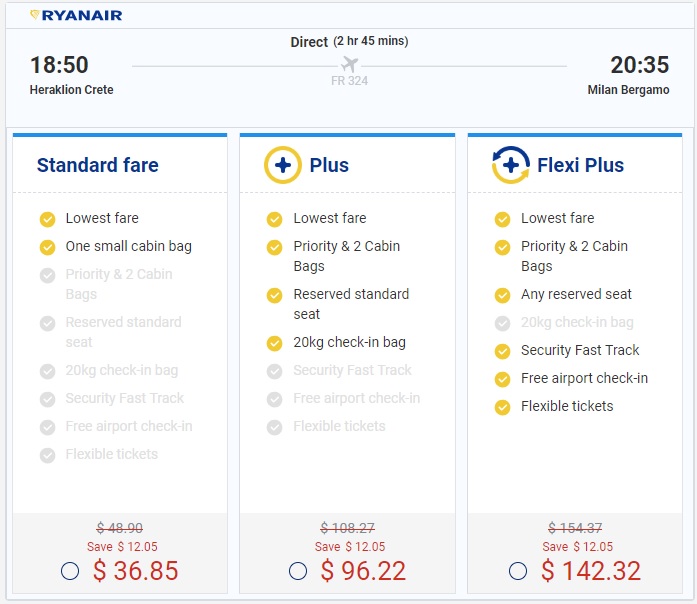 We actually decided to book 3 “plus” seats. I did that because we were traveling with both a car seat and a stroller. Ryanair, like a number of other carriers whose sites I checked, says that you can check for free one car seat or stroller. In reality, my experience is that both one car seat and one stroller were free on all of the airlines we flew this time (Swiss, Lufthansa, Condor, Ryanair, and Iberia), but I wasn’t confident that Ryanair wouldn’t want to charge for one or the other. Booking three seats would give us more comfort, ensure someone else’s comfort (since our son wouldn’t be climbing across our laps and disturbing a third passenger in our row), and ensure that we had more than enough checked baggage allowance so as not to get hit with an unexpected fee at the airport.
We actually decided to book 3 “plus” seats. I did that because we were traveling with both a car seat and a stroller. Ryanair, like a number of other carriers whose sites I checked, says that you can check for free one car seat or stroller. In reality, my experience is that both one car seat and one stroller were free on all of the airlines we flew this time (Swiss, Lufthansa, Condor, Ryanair, and Iberia), but I wasn’t confident that Ryanair wouldn’t want to charge for one or the other. Booking three seats would give us more comfort, ensure someone else’s comfort (since our son wouldn’t be climbing across our laps and disturbing a third passenger in our row), and ensure that we had more than enough checked baggage allowance so as not to get hit with an unexpected fee at the airport.
One mistake here: online, Ryanair gives you the option to book an Adult (16+), Teen (12-15), child (2-11), or infant (under 2). However, if you choose infant, it books as an infant-in-arms. We didn’t want that (and I’ll note that Ryanair charges 25 Euros for that), so I booked it as 3 adults. During the booking process, Ryanair only asks for names, no birth dates, so I had no trouble booking and selecting our 3 seats. However, when I went to check in online, the earliest birth year I could choose from the drop-down was 2003 since I’d booked our son as an “adult”. I eventually exited the check-in process. When I went back to try again, it was chaos; dates I had entered for my wife and I (birthdays, passport expiration, etc) were all sorts of wrong and the system wouldn’t let me change them. I ended up having to call Ryanair (their call center charges by the minute) for help. It turned out that we couldn’t book our son as an adult (he had to be listed as a lap infant) but we could book an extra seat (which they named Mr. Extra Infant). That caused us to initially lose our seat assignments and led to a little confusion when we boarded, but all ended up fine. If you’re looking to book Ryanair with an infant, I guess the moral of the story is to book as a lap infant and then call to see if you can add an extra empty seat (or perhaps call from the get-go to make the reservation, though when paying by the minute for customer service I’d probably prefer to do as much as possible online in advance).
As for the flight itself, it was absolutely fine. The seats were as spacious as anyone else’s in economy class.
Service was chipper and peppy (not that we needed much of it since they do charge for everything on board, so we brought our own food and drinks). I further wasn’t disappointed when I found out after the fact that Ryanair somehow undercharged me from the total shown when I hit “submit” to buy our tickets. I guess Dynamic Currency Conversion worked out in my favor for once.
4) Beware of high-fee ATMs
Speaking of Dynamic Currency Conversion…
Driving in Elounda, Crete, I noticed an ATM on my first day that really stood out. It was blue and gold and and if I said it was bold you would think I was just trying to rhyme, but it really stood out. About 200m later, I noticed another one. Not 200m later I saw a third. And then a fourth a bit down the road. That made me raise an eyebrow.
I eventually needed cash and we asked a shopkeeper where we could find an ATM. The way he asked, “Do you care which bank?” made me realize that I should Google before withdrawing. Those blue and gold ATMs are called Euronet ATMs. Do your own Google search and you’ll find that fees are….significantly higher than what one would ordinarily expect from an ATM, apparently to the tune of 10-20% of your transaction in some markets. After 2 or 3 Google articles, I’d read enough about this Kansas-based company to know that I didn’t want to use a Euronet ATM.
I ended up using two different normal-bank ATMs in Crete (and one in Switzerland) that charged normal ATM fees of 2 or 3 Euros. However, I’ll note that every ATM I used offered me Dynamic Currency Conversion. DCC is simply a way for the bank to earn some more money off of the transaction. Billed as away to give you confidence in knowing the exact exchange rate you’re receiving by choosing to withdraw a US-dollar figure, the exchange rates are just bad. While I’m used to seeing the option for DCC when paying at hotels / restaurants / shops, this trip was the first time I’d seen ATMs trying to sell it. Stick with using the local currency and let your bank give you the correct rate.
5) Traveling with a baby? Places that serve espresso have milk.
We bought milk during out travels in Europe and kept it in our hotel fridges, but a handful of times we either ran out and hadn’t yet made it to the store or were out of the room all day and needed something fresh. We didn’t expect most restaurants / hotels to have milk on hand, but I quickly learned that any place with an espresso machine has the ability to serve either hot or cold milk. Whether ordering it in a restaurant or at the hotel bar (and trying to charge it to my room), I don’t think anyone in Europe charged us for a cup of milk for the baby. I was absolutely willing (and expecting) to pay for it each time, but people were great about it. If I found myself in the situation of needing milk for a child again, I would still certainly expect to pay for it, but now I at least know that it’s easier to get at restaurants, cafes, and hotel bars than I might have assumed.
6) Don’t want to pay for Global Entry? Mobile passport is still a win
With a stable of credit cards that would reimburse the fee for Global Entry, I am probably the only miles-and-points blogger out there who does not have Global Entry. It’s not been convenient (the airports where interviews are done are all far away…yes, I could “pop in” randomly to see if we can do an interview, but with a baby along for the ride I’d usually rather get to where I’m going), but even more importantly: it just hasn’t seemed necessary.
We’ve been using Mobile Passport for a couple of years now and it’s just super fast. This time, we landed at JFK and had exactly 0 people in front of us for the Mobile Passport line when we got there. We were straight through immigration in a couple of minutes. If we were behind those with Global Entry, it was probably mostly because they were walking faster.
Note that the ability to scan and store your passport information now costs $15 per year I believe, but if you’re OK with typing it in as you sit on your plane, I believe it is still free (I did end up paying the $15 recently). We’ve re-entered the US at several airports now with Mobile Passport and never had a line of more than a couple of people in front of us. While I certainly don’t have a problem paying for Global Entry since many of my credit cards reimburse it, Mobile Passport eliminates the hassle of making an appointment and doing an interview and has produced a similar-enough result on my trips thus far.
Mobile Passport is available for both Android and iOS:
7) European airports are really family-friendly
This was our first trip to Europe since having a baby and I was really impressed with how family-friendly European airports are. Most of the airports through which we flew had dedicated security lines for families (shorter lines for less wait with the kiddos). Zurich airport had a great family play center with plenty of toys and things for kids to climb and burn energy (as well as bathrooms and changing rooms).
Madrid had a little playground that enabled my son to burn a bunch of energy before the flight so that he’d fall asleep before we even took off (though that didn’t end up working out since we sat on the plane for more than an hour and then when he woke up about 2hrs after takeoff he didn’t sleep again).
I questioned on Twitter and Facebook why we don’t have stuff like those play areas at airports in the US and several friends and readers pointed out that we do. I hadn’t realized how many US airports also have play facilities, but now I’ll be seeking them out for upcoming trips.
Bottom line
These “discoveries” aren’t all news per se, but I thought that different readers would find different parts of them useful for upcoming trips. Whether you have an itch to book business class even though you know it’s silly in Europe (and will now consider Condor), you’ve been wrongly dismissing Ryanair, or you were tempted to wait it out to book your European travel, hopefully one or two of these helps your trip along.



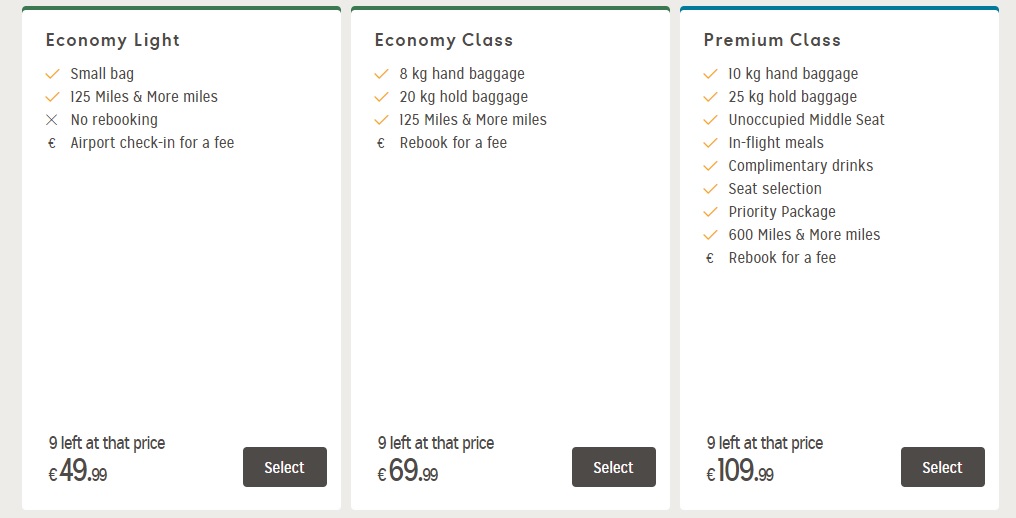
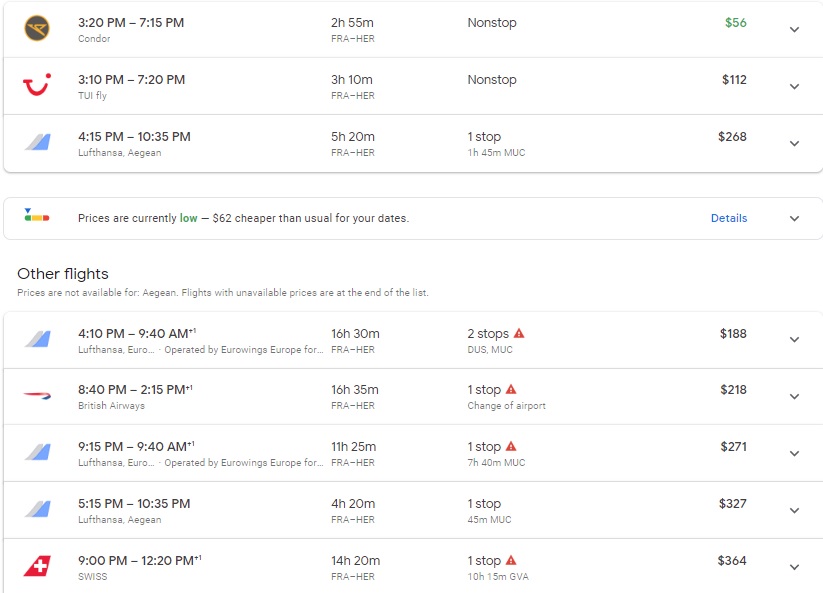

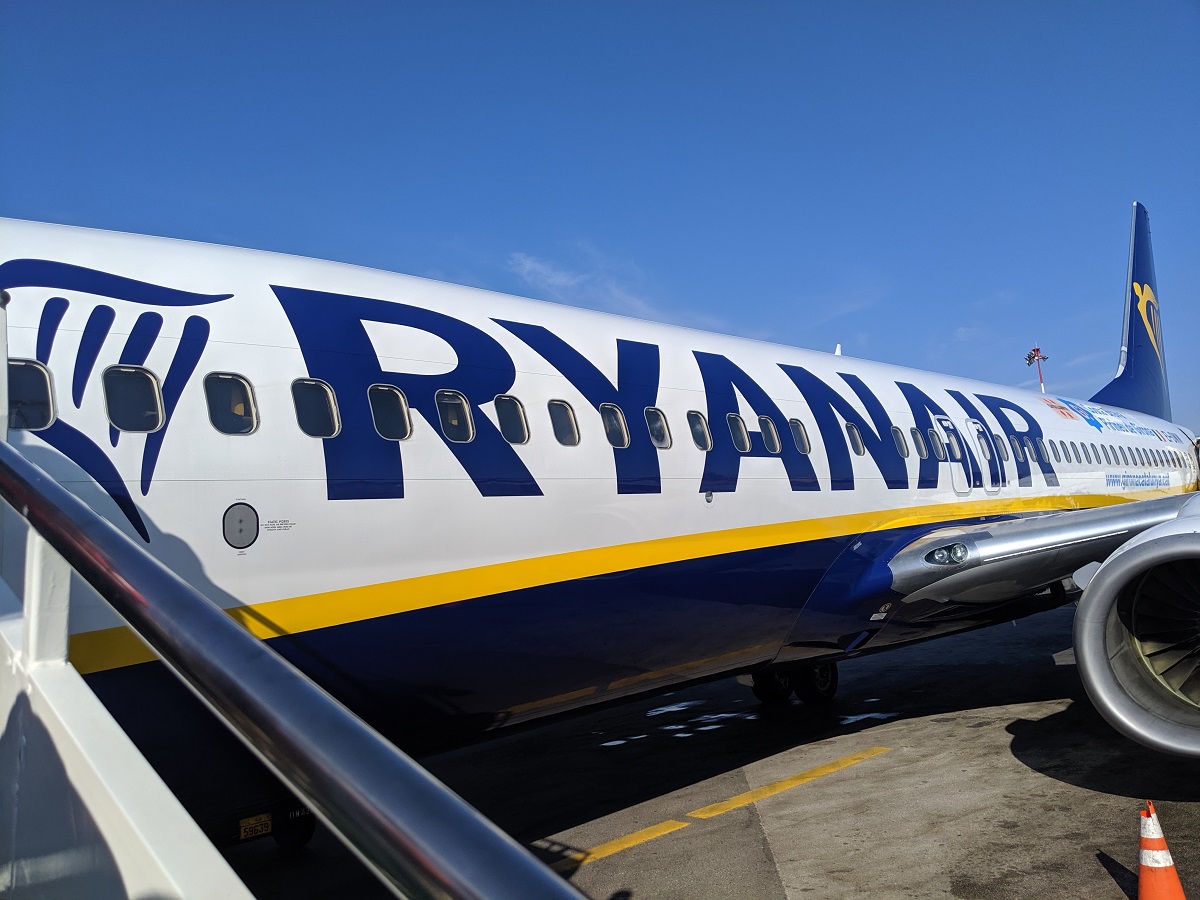
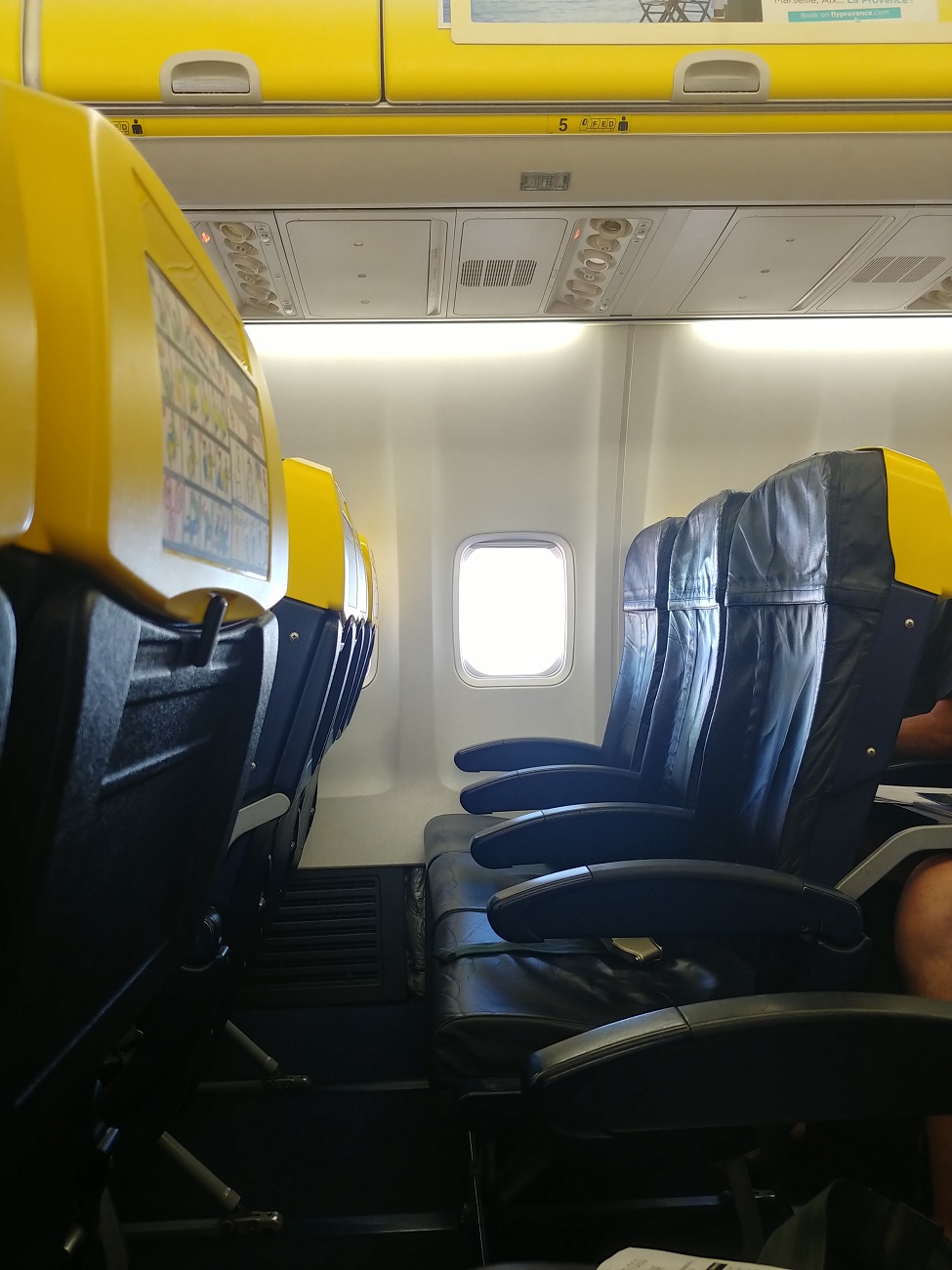
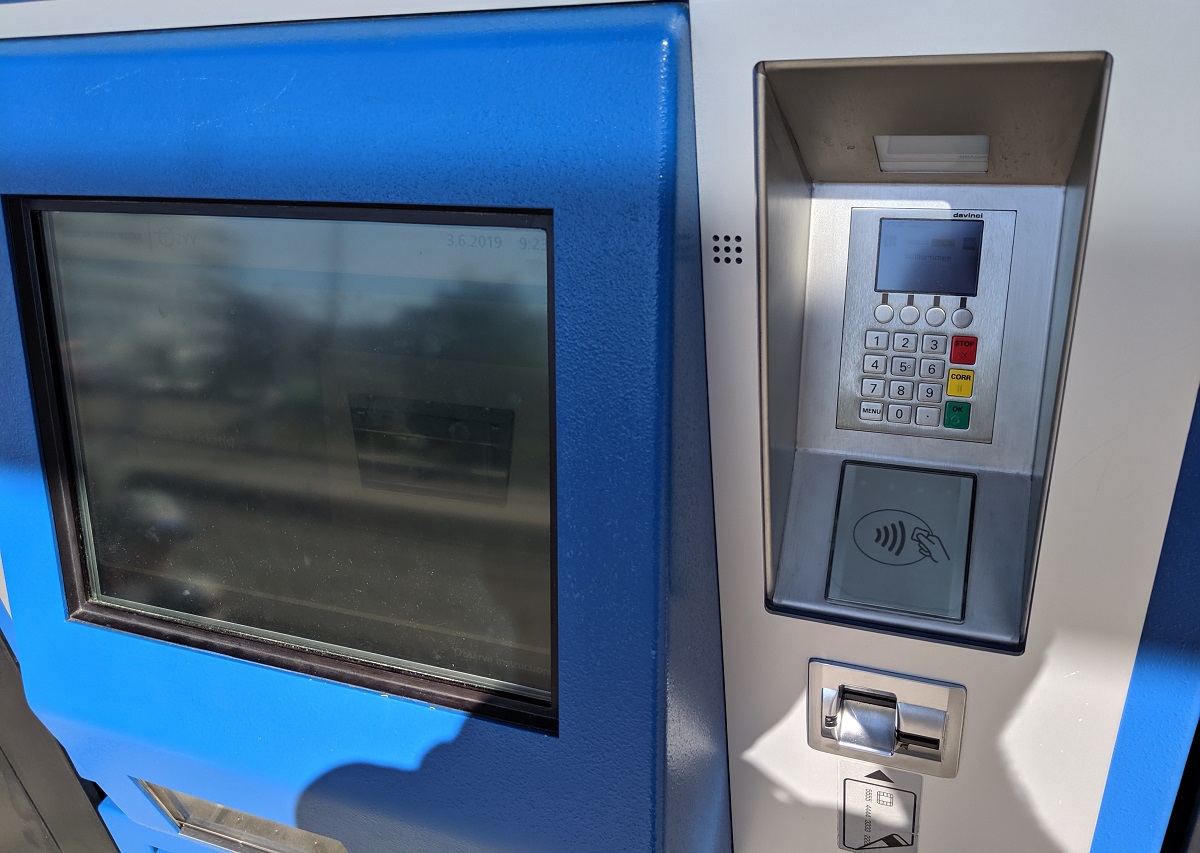

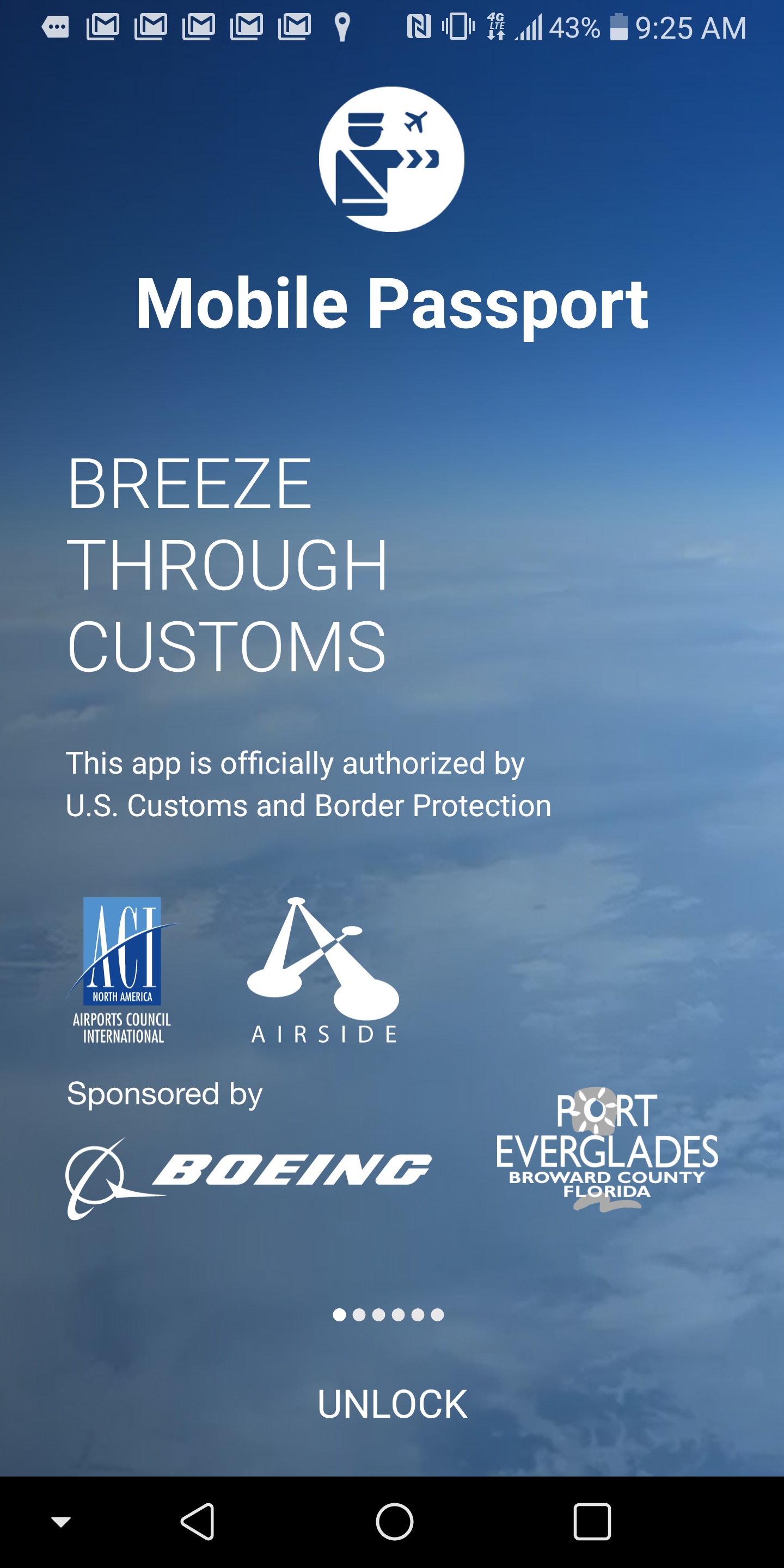
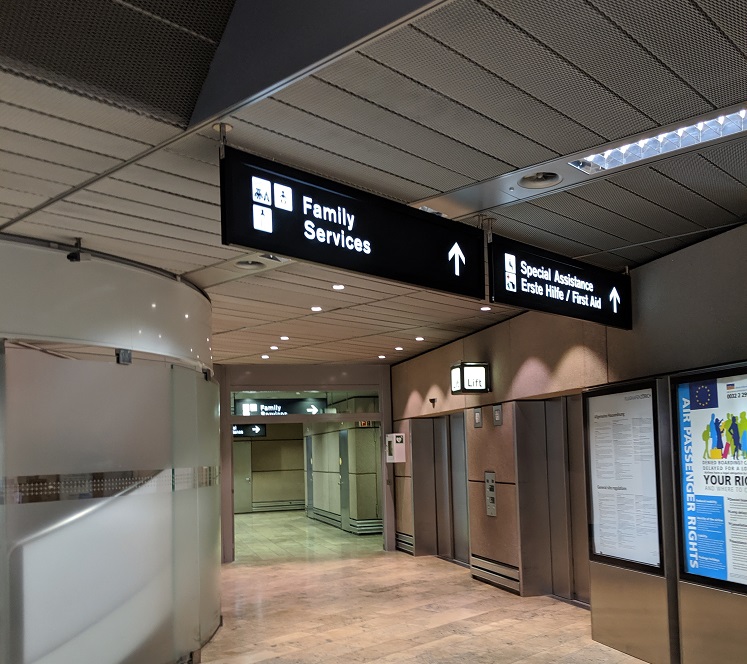





Yes, the Euronet ATMs – I got a warning of those from a posting on an expat group just before my recent trip to Portugal so I was able to avoid them. The local bank network machines there are labelled “Multibanco”. BUT I discovered my Chase ATM Debit card doesn’t have any European affiliate partners & so paid a $5 ATM fee plus a currency conversion fee each time, average $8. Also local banks wouldn’t change American $$ to Euros unless I had an account, I had to go to a Western Union where the rate was lousy so I was screwed either way accessing Euros.
I need to to consider a Plan B for international ATMs but Chase is very convenient here at home.
You want a Schwab checking account. They reimburse bank ATM fees and don’t charge an additional fee for currency conversion.
I’ve always had a horror of budget airlines, and just seeing “Ryan Air” made my skin crawl … until lately. I’ve come to understand that some people wouldn’t be able to travel at all unless they can book rock-bottom prices. They understand exactly what they’re buying and they’re mentally prepared for issues. And, of course, those issues seem much worse than on a legacy airline … but the vast majority of budget-priced flights operate just fine. So I’ve (finally) learned about the appeal of a Ryan Air and I kinda admire them.
Thanks Nick. Excellent post. We will be traveling with my son soon. You have put a new perspective of Ryanair for me.
Thanks Nick – ran into an Euronet ATM at the Budapest Airport yesterday. Only took out a small amount but was hit with a 13% fee:-( These types of mistakes are made when you and your family are sleep deprived. Thanks for the information!
Last time visited Europe (not merely transiting) was in 2004 – overpriced, overrated, overcrowded, and shitty service!
Indicting an entire continent based on your experience from 15 years ago is really some next-level psychosis. As the saying goes, you must be fun at parties.
And that’s your presumptive psychotic opinion???
In fact, I lived there for years and visited often but the last time was 15 years ago while you probably were having your thumb up your nose!
Spain and Portugal are CHEAP
You gotta get a bank that rebates all atm fees worldwide…i have used schwab for years and been very happy. It’s so nice to not have to think about which ATM to use.
I have successfully used Schwab ATM card for years but it didn’t really help on my recent trip to Italy. I tried several ATM’s and all of them had hidden fees built in the rate so, as the result, I had to withdraw my Euros with 1.15-1.17 EUR/USD rate instead of the correct 1.12 market rate of the day. That means that I can’t even ask Schwab to reimburse me the fees because the fees are hidden. I wonder if that’s only the Italian banks issue.
As Dimi notes below, I don’t think that’ll help you if the ATM is using wacky DCC rates. I assume they’re baking that into your withdrawal rather than listing it as a fee — so they’re basically charging a 10-20% commission on the currency conversion and running your withdrawal in US dollars.
Ya DCC isn’t a fee it’s a conversion rate (a bad one)
can you opt out of the DCC on the machine?
You could on the legit bank ATMs. I don’t believe it’s possible on the Euronet ones.
For Global Entry, most international airports in the US allow you to do Global Entry on arrival, so the next time you fly through the airport, you can do your Global Entry interview there. It should only take 5-10 minutes per person to scan your passport, fingerprints, and take a photo.
Thanks, Grant! I guess my perspective on it is that if the Mobile Passport line continues to get me through as fast as GE, I don’t feel a strong need to do it. I guess it’d be nice to get TSA Precheck now and then since I have only once ever gotten it randomly (and ironically had to cancel that flight), but I haven’t felt enough of a need for it yet. Maybe that’ll change eventually.
Like that famous boy scout saying… better to have TSA PreCheck and Global Entry and not need it rather than need it and not have it…
Precheck is so great faster lines no shoes or belt off usually just metal detector over the xray machine and no removing liquids.
They are in no way as strict on the liquids either
Can’t imagine flying without it
Not at SFO.
They are booked 6 months out and no walk-ins.
Don’t forget the visa verification in some places. Especially when you’re flying from Italy to another country.
You have to have a physically printed ticket stamped by the check in office before you can get on board. Otherwise, they will refuse boarding and charge you for printed boarding pass fee.
can you elaborate?
Ryanair checks your Visa status at the check-in counter if you’re a non-EU resident flying to other EU countries. You have to print out the ticket so that they can stamp/mark a “checked” sign on your ticket. You maybe refused boarding at the gate if you do not do this. This is strictly Ryanair policy. You can pass through the airport security without a problem.
I think it’s just another way to rip-off unfamiliar customers at the last minute.
Interesting. I didn’t experience this on my flight from HER-BGY last month, nor in my previous Ryanair experiences (my previous experiences were admittedly about 8 years ago).
We didn’t print anything before going to the airport this time since we checked in on the app and had mobile boarding passes for us (we had to check in the extra seat we booked for the infant at the airport, but that was free of charge).
I don’t know when the rules were implemented, but they have been getting more strict over the years on enforcing their rules.
https://www.ryanair.com/gb/en/useful-info/help-centre/faq-overview/passports-and-visas#0-0
I’m a non EU/EEA passenger do I need extra travel document/visa check?
IMPORTANT INFORMATION FOR ALL NON EU/EEA PASSENGERS
Irrespective of a passenger’s visa requirements, all non-EU/EEA citizens must have their travel documents checked and stamped at the Ryanair Visa/Document Check Desk before going through airport security. Your boarding pass will display this information for routes that you must comply with this Visa/Document checks requirement.
Non-EU/EEA passengers must do this in order to ensure compliance with immigration authorities. We reserve the right to refuse travel, if there is a failure to comply with this requirement.
If you have been denied boarding and require immediate clarification please call +353 1 2480860 to speak to one of our team (subject to opening hours), please note this telephone number only deals with queries regarding denied boarding due to travel documents and visas.
Oh, well, yeah — I think you always have to go to the check-in counter before an international flight with any airline so they can verify your visa status before you go through security, right? Isn’t that standard operating procedure for every airline as they need to make sure you’re authorized to go to the country you’re flying to? I don’t think that’s strictly Ryanair.
But I didn’t have to print anything for that. What did you need to print? When did you encounter this?
I’m not talking about flying to another country that requires a visa. It applies to travelling within EU or across Schengen countries, flights that do not normally require additional visa check.
I just needed my boarding pass and have it marked by a Ryanair employee at the check in desk. They usually have a separate check-in counter specifically for “Visa Check”.
Keep in mind that Ryanair is finicky about enforcing the “rules”. If the boarding agents have a lot of time on hand or low on ‘quota’, they will check every single rules and policy to charge extra fees. If the flight is full, they often skip those checks.
Just one more note on dynamic currency conversion, be aware of this when booking award flights via phone too. I was recently quoted by Virgin Atlantic either 360 GBP or 500+ USD for award taxes and fees. I chose Pounds and it showed up on my statement as 460 USD.
DCC is evil and I’ve seen them (even 3-5 years ago) at ATMs in heavily touristed places, e.g. Italy and Prague. WHen I did the math the fee came out to something like 7%. Interestingly I’ve never come across one in Germany.
Wanted to share something I encountered on a recent visit to Ljubljana. I purchased a bus transit card for 1€ and added 8€ of fare value from a kiosk at a bus stop with my chase reserve cc. To my surprise the transaction was processed as a cash advance generating a $10 transaction fee and a small amount of interest. I don’t recall seeing any indication that the transaction would not be processed as a normal cc transaction. Chase said they had no control as to how the transaction was processed but were kind enough to credit the fees and interest. I also noticed the DCC option for the first time from an ATM in Croatia. The conversion offered was on the order of 6 kuna per dollar vs. the 6.57 per dollar that I received by declining the DCC option.
Very interesting. I wouldn’t have expected that to process as a cash advance, either!
I flew Ryanair in Europe last summer, and will be again this August. (As mentioned: It’s often the ONLY airline on certain dates and for certain cities) I found their seating easily more comfortable then American or United economy. I was kind of shocked by this, but our major airlines have been in such a race for the bottom, they will eventually be on-par with Spirit.
US credit cards without true chip and pin are a real nuisance in Europe. I hate the looks I’m given when a receipt that needs to be signed prints out.
I know Greg has mentioned this before, but most of those payment terminals in Europe will accept Apple Pay and Samsung Pay, so it’s just a tap and go transaction. I recently tried this in South Africa and the Seychelles though, and even though I know it would have worked, I was met by confused looks on multiple occasions so gave up.
Next time I come over to Poland I’m hoping to have the Bank of America contactless cards which will hopefully negate all the trouble.
I used both my Samsung Gear S3 for Samsung Pay and my Capital One Venture card for contactless. Both worked swimmingly.
“the looks” … seriously? Why would you care what people taking your money think of you?